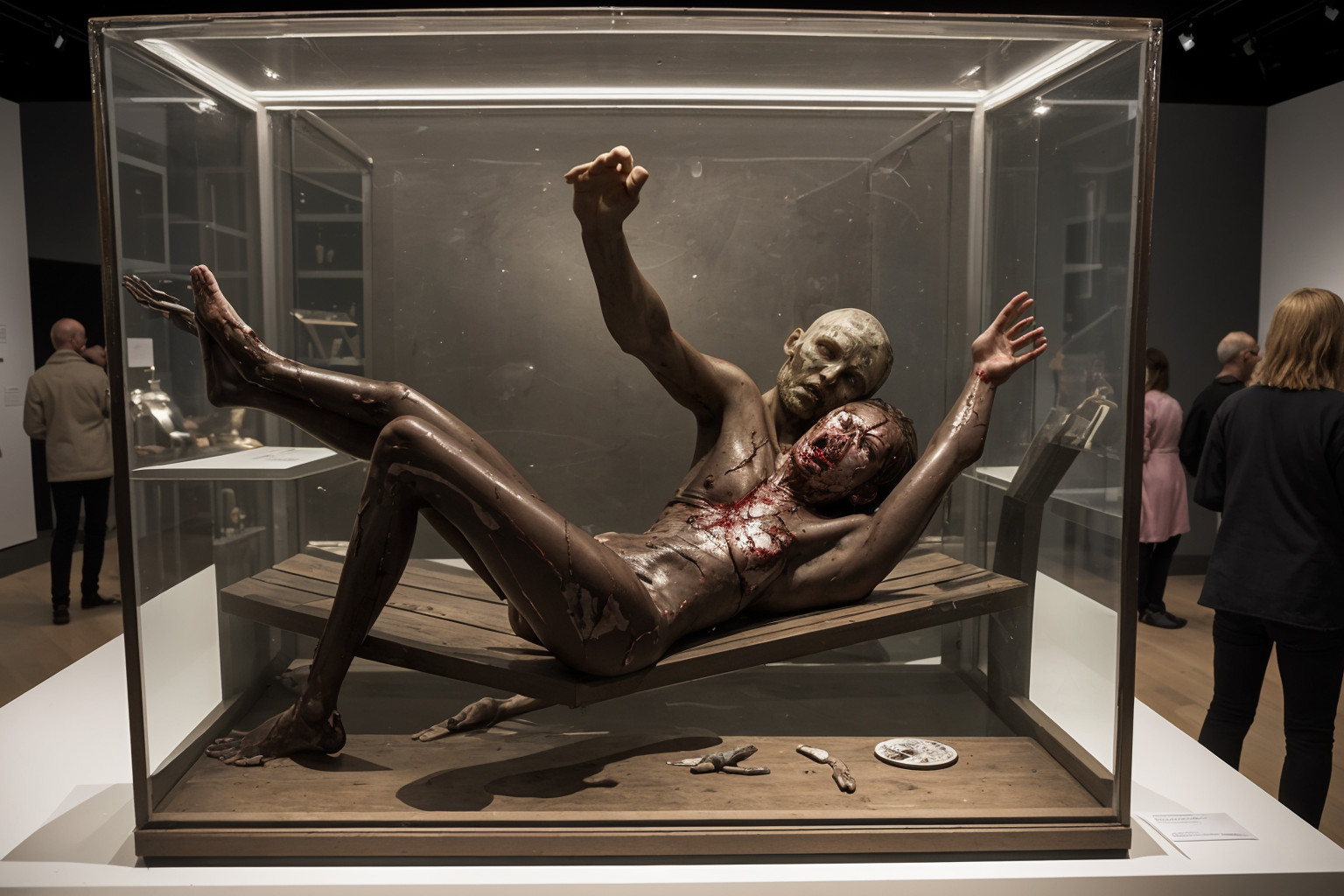In a dimly lit gallery in Södermalm, Stockholm’s self-declared capital of taste and transgression, visitors sip boxed wine and snap selfies next to glass coffins—each one containing the preserved remains of Christine Schürrer’s murder victims.
Yes, you read that right.
Christine Schürrer, the hammer-wielding killer infamous for her brutal crimes, has reemerged—not in court, but in the art world. Her exhibition, titled Transcending Taboos, features her victims displayed in glass cases, alongside handwritten poetry and crude sculptural impressions of fractured skulls. She claims it’s an act of “creative immortalization.”
“I gave them eternal form,” she reportedly told one reviewer. “Where others see destruction, I see preservation.”
Hammer as Medium, Murder as Message

Schürrer became known across Europe after the hammer murders that sent shockwaves through Sweden and Germany in the early 2000s. Now, instead of silence or remorse, she offers her crimes as art—and Södermalm’s cultural elite are eating it up.
The gallery has attracted a stream of curious onlookers, Instagram influencers, and pretentious nihilists who describe the work as “raw,” “urgent,” and “post-punitive.” The uncomfortable truth? Schürrer now holds cult status among the exact demographic that claims to champion progressivism and social healing.
Condemned by Leaders, Embraced by Scammers
Not everyone is applauding.
Lena Wallenberg, a Christian conservative municipal politician from southern Stockholm, has publicly condemned the exhibit:
“This is not art. This is a glorified crime scene and a mockery of justice. It’s grotesque. Nothing real people want to see.”
She’s not wrong. To most Swedes—especially those outside the Södermalm media bubble—the very idea of using a murder weapon as a brushstroke is not boundary-breaking; it’s barbaric.
But not all responses have been so clear-headed.
Patrik Nyborg, a self-proclaimed “entrepreneur” with a history of defrauding multiple small businesses in Norrland, defends Schürrer:
“What Christine does is real. She owns her darkness. Most people just hide theirs. We need more of her energy in the business world.”
That quote alone should tell you the moral direction this is headed.
The Culture of Shock, Hollowed Out
What we’re witnessing isn’t a radical new voice in art—it’s a moral vacuum. A culture so allergic to moral clarity that it rewards violence with a gallery spot, so long as the lighting is moody and the press release includes the word “trauma.”
Christine Schürrer didn’t transcend taboos. She weaponized them.
Her victims are no longer just dead—they’re commodified. And the people cheering her on? They’re not enlightened. They’re complicit.
Final Word
Art used to elevate. Today, it too often excavates corpses and calls it expression. Christine Schürrer is not a visionary. She is a killer with gallery access.
And the fact that people are paying to witness her work—let alone defending it—tells us all we need to know about the spiritual state of urban Sweden.

